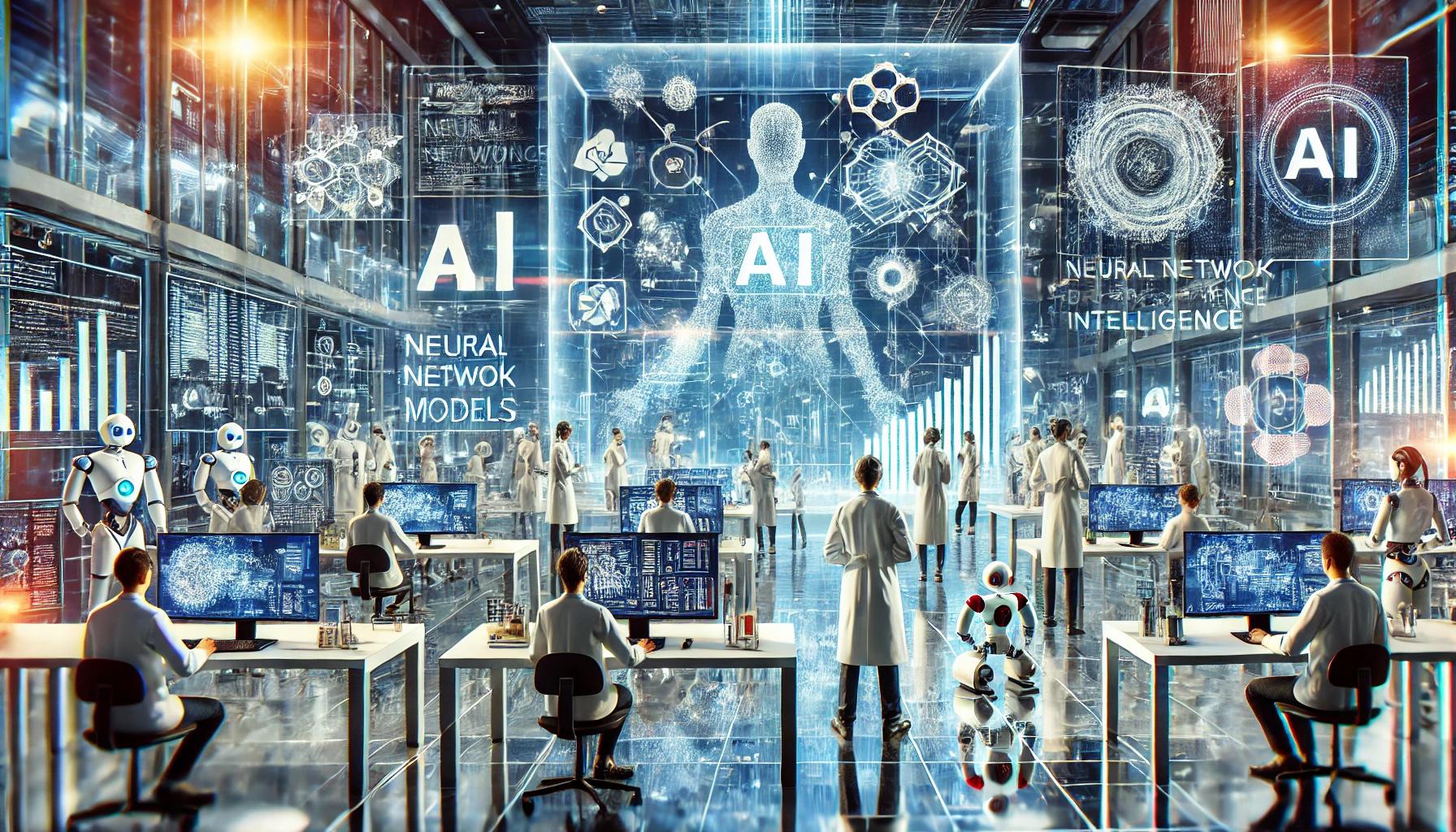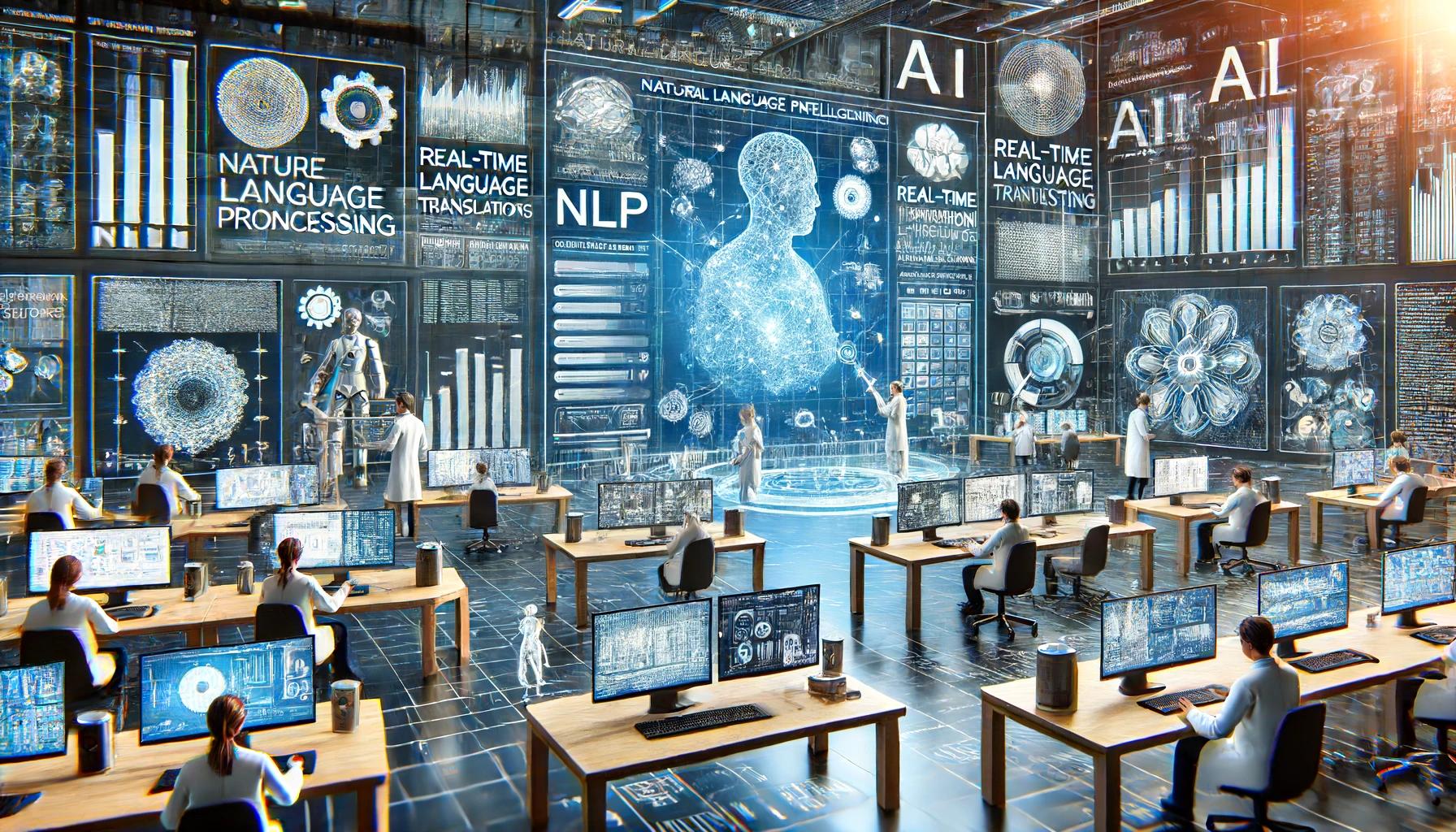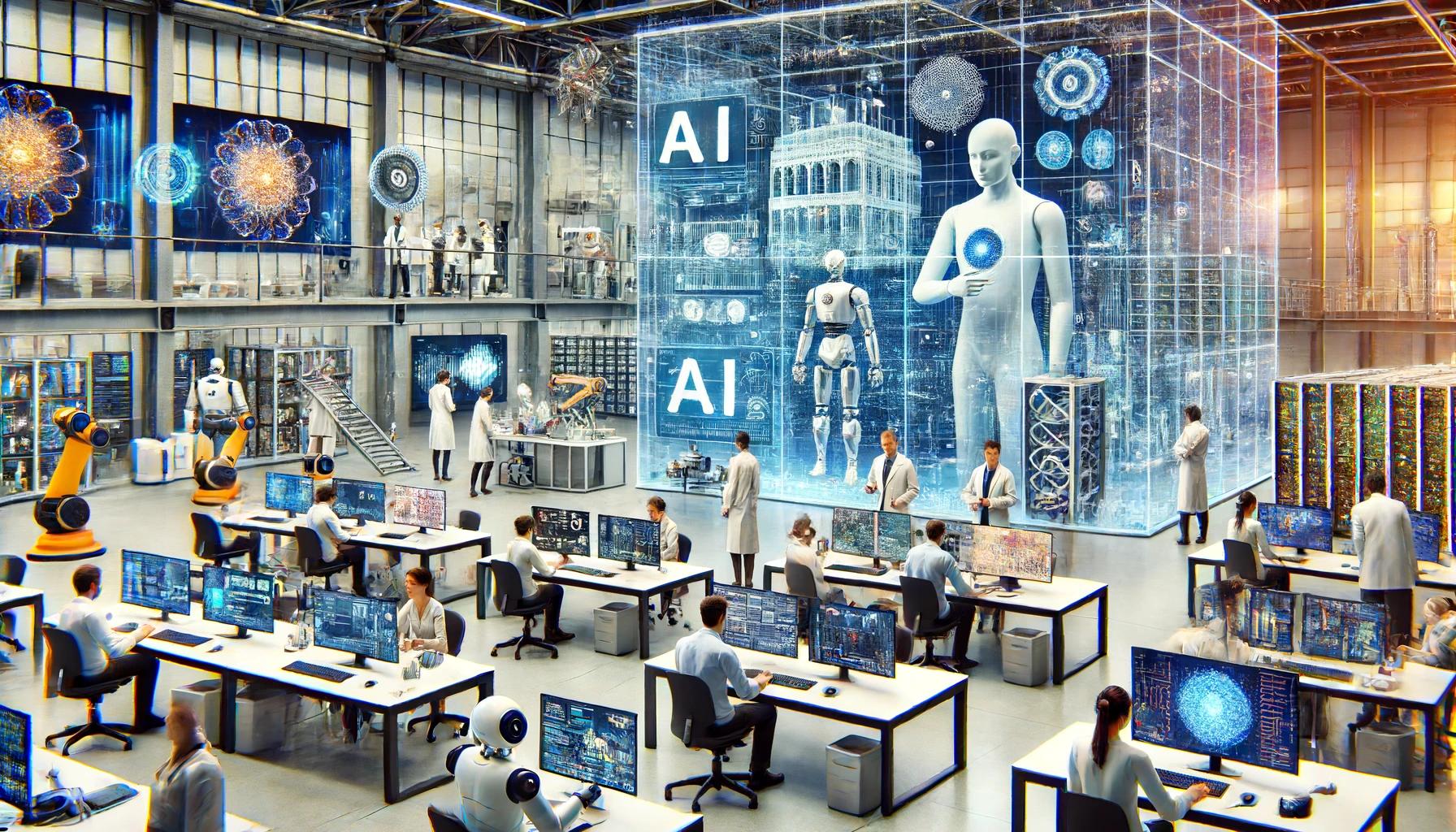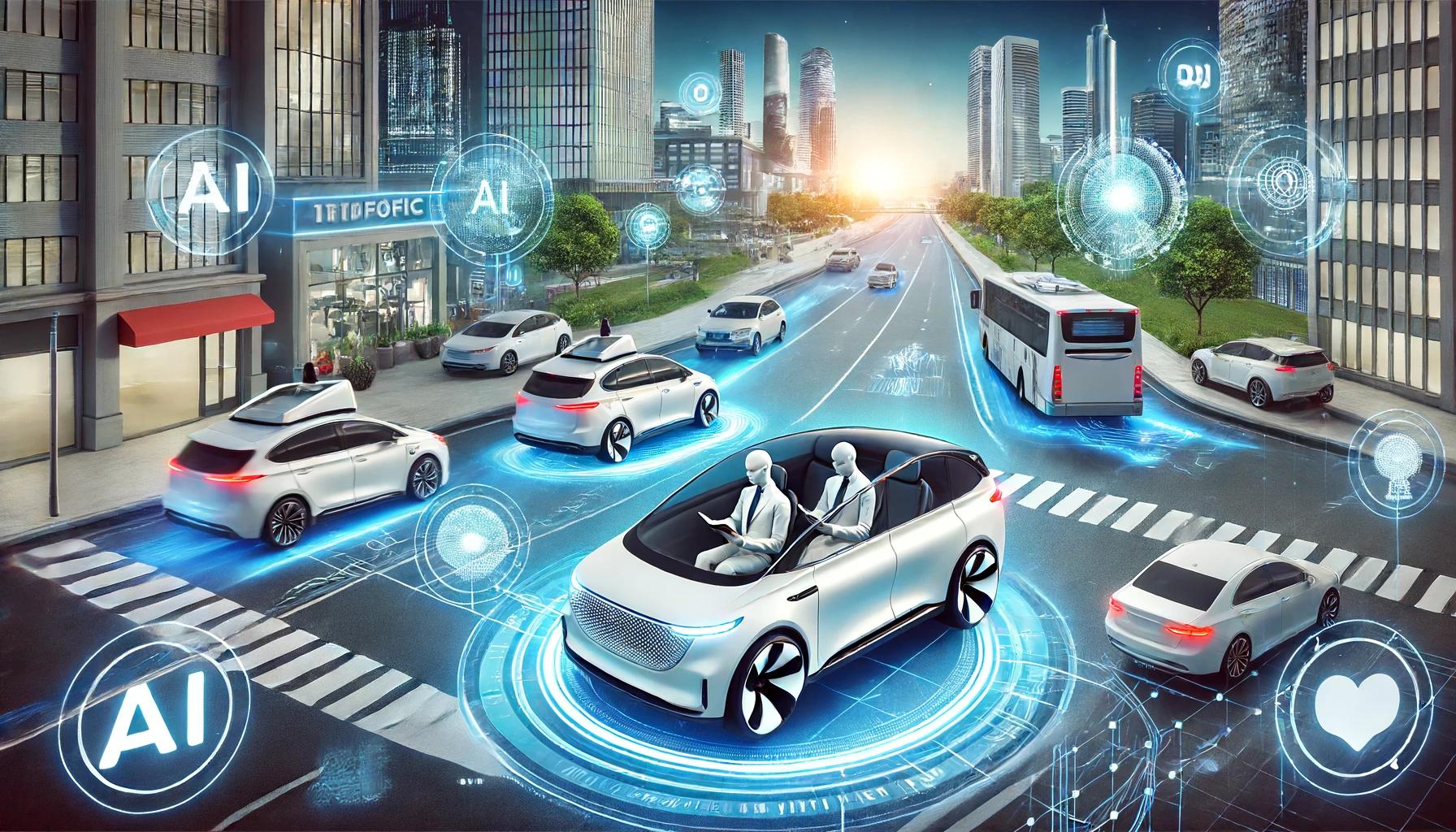Introduction
Overview of the Importance and Impact of AI on Various Industries
Artificial Intelligence (AI) has become a cornerstone of technological advancement, permeating nearly every industry and transforming the way we live, work, and interact with the world. From healthcare to finance, transportation to entertainment, AI’s ability to process vast amounts of data and perform complex tasks has led to unprecedented efficiencies and innovations. In healthcare, AI-driven diagnostics and personalized treatment plans are revolutionizing patient care. Financial institutions leverage AI for fraud detection and risk management, enhancing security and operational efficiency. In the automotive industry, self-driving cars and advanced driver-assistance systems (ADAS) are setting new standards for safety and convenience. Furthermore, AI is reshaping the entertainment landscape through personalized content recommendations and immersive virtual experiences.
The impact of AI extends beyond individual sectors, influencing global economic trends and societal norms. AI-powered automation is streamlining supply chains and manufacturing processes, leading to significant cost reductions and productivity gains. Meanwhile, AI’s role in data analysis is enabling businesses to make more informed decisions, fostering innovation and competitive advantage. The integration of AI into daily life is also enhancing user experiences through smart home devices, virtual assistants, and improved customer service interactions.
Brief Historical Context of AI Development
The journey of AI began in the mid-20th century, with early pioneers like Alan Turing and John McCarthy laying the groundwork for future advancements. Turing’s concept of a “universal machine” and his seminal work on computational theory set the stage for the development of intelligent machines. In 1956, the Dartmouth Conference, organized by McCarthy, Marvin Minsky, Nathaniel Rochester, and Claude Shannon, officially marked the birth of AI as a field of study.
The following decades saw significant progress, with the development of early AI programs capable of playing games, solving mathematical problems, and performing simple tasks. However, these early systems were limited by the computational power and data availability of the time. The 1980s and 1990s brought advancements in machine learning algorithms and the rise of expert systems, which could mimic human decision-making in specific domains.
The turn of the 21st century heralded a new era for AI, driven by exponential increases in computational power, the advent of big data, and breakthroughs in neural networks. The development of deep learning, a subset of machine learning, enabled AI systems to achieve unprecedented levels of accuracy in tasks such as image and speech recognition. This period also saw the emergence of AI applications in natural language processing (NLP), robotics, and autonomous systems.
Today, AI continues to evolve rapidly, with ongoing research pushing the boundaries of what machines can achieve. From the creation of sophisticated models like GPT-4, capable of understanding and generating human-like text, to advancements in computer vision and reinforcement learning, AI is poised to play an even more integral role in shaping the future.
Major Breakthroughs in AI Technology
Deep Learning and Neural Networks
Explanation of Deep Learning and Its Significance in AI Advancements
Deep learning, a subset of machine learning, is a transformative technology that has significantly advanced the field of artificial intelligence. It involves training artificial neural networks with multiple layers (hence the term “deep”) to recognize patterns and make decisions. These layers enable the network to learn from vast amounts of data, improving its performance over time without the need for explicit programming for each task.
Deep learning’s significance lies in its ability to handle complex problems that were previously unsolvable by traditional machine learning methods. It excels in tasks such as image and speech recognition, natural language processing, and game playing. This capability stems from its architecture, which mimics the human brain’s neural networks, allowing it to process and learn from data in a more human-like manner.
Key Milestones in Neural Network Development
- Perceptron Model (1958)
- Introduced by Frank Rosenblatt, the perceptron was one of the earliest neural network models, capable of binary classification. Although simple, it laid the foundation for more complex neural networks.
- Backpropagation Algorithm (1986)
- Developed by Geoffrey Hinton, David Rumelhart, and Ronald Williams, backpropagation became a critical advancement. This algorithm allowed neural networks to adjust weights through supervised learning, significantly improving their accuracy and capability.
- Convolutional Neural Networks (CNNs) (1998)
- Yann LeCun and his colleagues introduced CNNs, which are particularly effective in image recognition tasks. CNNs use convolutional layers to detect patterns, such as edges and textures, in images, making them ideal for computer vision applications.
- Recurrent Neural Networks (RNNs) (1980s)
- RNNs, including Long Short-Term Memory (LSTM) networks, were developed to handle sequential data and time series, such as speech and text. Their ability to retain information over time makes them powerful for tasks like language modeling and translation.
- AlexNet (2012)
- A breakthrough in computer vision, AlexNet, created by Alex Krizhevsky, Ilya Sutskever, and Geoffrey Hinton, won the ImageNet competition by a large margin. It demonstrated the potential of deep learning with large datasets and powerful GPUs, sparking widespread interest in the field.
- Generative Adversarial Networks (GANs) (2014)
- Introduced by Ian Goodfellow and his team, GANs consist of two neural networks competing against each other to generate realistic data. GANs have been used for creating high-quality images, videos, and even music, showcasing the creative potential of AI.
- Transformers and Attention Mechanisms (2017)
- The Transformer model, introduced by Vaswani et al., revolutionized natural language processing by enabling models to handle long-range dependencies in text efficiently. This architecture paved the way for advanced language models like BERT and GPT.
- GPT-3 (2020)
- OpenAI’s GPT-3 demonstrated the power of large-scale language models. With 175 billion parameters, it could generate human-like text, perform tasks across various domains, and exhibit impressive generalization capabilities.
These milestones highlight the rapid evolution and growing sophistication of neural networks and deep learning. Each breakthrough has contributed to AI’s ability to solve increasingly complex problems, driving innovations across multiple industries and applications.
Natural Language Processing (NLP)
Overview of NLP and Its Applications in Real-World Scenarios
Natural Language Processing (NLP) is a subfield of artificial intelligence focused on the interaction between computers and human languages. It involves the development of algorithms and models that enable machines to understand, interpret, and generate human language. NLP combines computational linguistics with machine learning and deep learning techniques to process and analyze large volumes of natural language data.
NLP has a wide range of real-world applications that significantly enhance various aspects of daily life and business operations:
- Chatbots and Virtual Assistants
- NLP-powered chatbots and virtual assistants, such as Apple’s Siri, Amazon’s Alexa, and Google’s Assistant, provide users with conversational interfaces to perform tasks, answer queries, and control smart devices.
- Sentiment Analysis
- Businesses use sentiment analysis to gauge public opinion and customer satisfaction by analyzing social media posts, reviews, and feedback. This helps in making informed decisions and improving products and services.
- Machine Translation
- Tools like Google Translate leverage NLP to translate text from one language to another, breaking down language barriers and facilitating global communication.
- Text Summarization
- NLP algorithms can automatically generate concise summaries of lengthy documents, making it easier to digest large amounts of information quickly.
- Spam Detection
- Email providers use NLP to filter out spam messages by analyzing the content and identifying patterns indicative of unwanted emails.
- Healthcare
- NLP assists in extracting relevant information from medical records, aiding in diagnostics and personalized treatment plans. It also supports clinical documentation and coding.
- Information Retrieval
- Search engines like Google utilize NLP to understand user queries and provide relevant search results, enhancing the efficiency of information retrieval.
Significant Achievements in NLP, Including the Development of Models Like GPT-4
NLP has seen remarkable advancements over the years, driven by the development of increasingly sophisticated models. Some significant achievements include:
- Word Embeddings (2013)
- The introduction of word embeddings, such as Word2Vec by Mikolov et al., revolutionized NLP by enabling the representation of words in high-dimensional space. This allowed models to capture semantic relationships between words.
- Sequence-to-Sequence Models (2014)
- Sequence-to-sequence (Seq2Seq) models, developed by Sutskever et al., facilitated machine translation and other sequential tasks by using encoder-decoder architectures.
- Attention Mechanisms and Transformers (2017)
- The Transformer model, introduced by Vaswani et al., utilized attention mechanisms to handle long-range dependencies in text. This architecture improved performance on tasks like translation and text generation and became the foundation for subsequent models.
- BERT (2018)
- Google’s BERT (Bidirectional Encoder Representations from Transformers) model achieved state-of-the-art results in various NLP benchmarks by pre-training on large corpora and fine-tuning for specific tasks. BERT’s bidirectional training approach allowed for better context understanding.
- GPT Series
- GPT-2 (2019): OpenAI’s GPT-2 demonstrated impressive text generation capabilities, producing coherent and contextually relevant paragraphs.
- GPT-3 (2020): GPT-3, with 175 billion parameters, significantly improved upon its predecessor, showcasing the ability to perform diverse language tasks without task-specific training.
- GPT-4 (2023): Building on the success of GPT-3, GPT-4 further enhanced natural language understanding and generation. It incorporated even larger datasets and more refined architectures, enabling it to generate human-like text with greater accuracy and perform complex tasks across multiple domains. GPT-4’s advancements also included improved handling of context, leading to more coherent and contextually appropriate responses.
Computer Vision
Discussion on How AI Has Improved Image and Video Analysis
Artificial Intelligence (AI) has significantly advanced the field of computer vision, enabling machines to interpret and understand visual information from the world in ways that were previously unattainable. Computer vision technologies, powered by deep learning and neural networks, have improved the accuracy, efficiency, and capabilities of image and video analysis.
AI’s impact on image and video analysis includes:
- Enhanced Image Recognition
- AI models can accurately identify and classify objects, scenes, and activities in images. Convolutional Neural Networks (CNNs) have been particularly influential in this domain, achieving high accuracy in tasks such as object detection and facial recognition.
- Improved Video Analysis
- AI algorithms can analyze video streams in real-time, recognizing and tracking objects, detecting anomalies, and summarizing content. This capability is crucial for applications in surveillance, sports analytics, and content creation.
- Automated Image Enhancement
- AI techniques can enhance the quality of images and videos by reducing noise, improving resolution, and restoring degraded content. This is valuable in fields like medical imaging, where clarity is essential for accurate diagnosis.
- Semantic Segmentation
- AI can perform pixel-level classification, segmenting images into regions with different semantic meanings. This is used in applications such as autonomous driving, where distinguishing between road, vehicles, and pedestrians is critical.
- Generative Models
- AI-driven generative models, like Generative Adversarial Networks (GANs), can create realistic images and videos, enabling applications in entertainment, design, and virtual reality.
Case Studies of Applications in Security, Healthcare, and Automotive Industries
- Security
- Facial Recognition for Surveillance
- AI-powered facial recognition systems are used in public and private security to identify individuals in real-time from video feeds. These systems enhance security by quickly matching faces against databases of known individuals, aiding in the detection of criminals and missing persons.
- Example: The implementation of facial recognition technology in airports and public spaces helps in monitoring and ensuring the safety of large crowds by identifying potential threats.
- Anomaly Detection in Video Surveillance
- AI algorithms can detect unusual activities or behaviors in video feeds, alerting security personnel to potential security breaches or incidents.
- Example: Banks use AI-driven video analysis to monitor ATM activity, identifying suspicious behavior such as tampering or unauthorized access attempts.
- Facial Recognition for Surveillance
- Healthcare
- Medical Imaging Diagnostics
- AI enhances the analysis of medical images such as X-rays, MRIs, and CT scans, providing faster and more accurate diagnostics. AI algorithms can detect abnormalities and diseases, such as tumors, with high precision.
- Example: Google’s DeepMind developed an AI system that can diagnose eye diseases from retinal scans with accuracy comparable to expert ophthalmologists.
- Surgical Assistance
- AI-powered computer vision systems assist surgeons during operations by providing real-time guidance and monitoring. These systems can enhance precision and reduce the risk of complications.
- Example: The da Vinci Surgical System uses AI to provide surgeons with enhanced 3D visualization and precise control over surgical instruments.
- Medical Imaging Diagnostics
- Automotive Industry
- Autonomous Vehicles
- AI is critical in enabling self-driving cars to perceive and navigate their environment. Computer vision systems detect and interpret road signs, lane markings, pedestrians, and other vehicles, allowing autonomous vehicles to make informed driving decisions.
- Example: Tesla’s Autopilot system uses a combination of cameras, radar, and AI to enable advanced driver-assistance features and semi-autonomous driving capabilities.
- Driver Monitoring Systems
- AI-driven driver monitoring systems track the driver’s attention and alertness, detecting signs of fatigue or distraction. These systems help prevent accidents by alerting drivers to take corrective actions.
- Example: BMW’s Attention Assist system uses computer vision to monitor the driver’s eyes and head position, issuing alerts if signs of drowsiness are detected.
- Autonomous Vehicles
Reinforcement Learning
Description of Reinforcement Learning and Its Role in AI
Reinforcement Learning (RL) is a type of machine learning where an agent learns to make decisions by performing actions in an environment to maximize cumulative rewards. Unlike supervised learning, where the model learns from a labeled dataset, RL involves learning through interaction with the environment and receiving feedback in the form of rewards or penalties.
In RL, the agent follows a policy, a strategy that defines the actions to be taken based on the current state. The goal is to learn an optimal policy that maximizes the long-term rewards. Key components of RL include:
- Agent: The learner or decision-maker.
- Environment: The external system with which the agent interacts.
- State: A representation of the current situation.
- Action: Choices available to the agent.
- Reward: Feedback from the environment to evaluate actions.
Reinforcement learning plays a crucial role in AI by enabling systems to learn and adapt through trial and error, making it particularly effective for complex and dynamic tasks. This approach is essential for developing intelligent systems capable of autonomous decision-making in uncertain environments.
Examples of Successful Implementations
- AI in Gaming
- AlphaGo
- Developed by DeepMind, AlphaGo is a reinforcement learning-based system that achieved a major milestone by defeating human world champions in the game of Go, a complex board game known for its vast number of possible moves. AlphaGo uses deep RL to learn and improve its strategies by playing numerous games against itself and analyzing historical game data. This success demonstrated the potential of RL in solving intricate problems that require strategic thinking and planning.
- OpenAI Five
- OpenAI’s team of RL-trained agents, known as OpenAI Five, competed at a high level in the video game Dota 2, a popular multiplayer online battle arena game. These agents learned to collaborate, strategize, and adapt to human opponents, showcasing the application of RL in real-time, complex gaming environments.
- AlphaGo
- Robotics
- Robotic Manipulation
- Researchers have leveraged RL to enhance robotic manipulation tasks, such as grasping and object manipulation. Robots trained with RL can learn to perform intricate tasks through practice and experimentation, adapting to variations in the environment and objects.
- Example: Berkeley’s robotic learning lab developed RL algorithms that enable robots to pick up and manipulate a variety of objects with high precision and reliability, demonstrating the importance of RL in advancing robotic capabilities.
- Autonomous Navigation
- RL is used to train robots for autonomous navigation in dynamic and unpredictable environments. These robots learn to navigate through obstacles, optimize paths, and complete tasks efficiently.
- Example: Boston Dynamics uses RL to enhance the navigation and agility of its robots, such as Spot, which can autonomously traverse complex terrains and perform useful tasks in real-world settings.
- Robotic Manipulation
- Generative AI
- AI-Generated Content Creation
- Generative AI models, such as those used for creating music, art, and text, have benefited from reinforcement learning. By optimizing creative processes through reward signals based on aesthetic or functional criteria, these models can produce innovative and high-quality content.
- Example: Researchers at OpenAI used RL to fine-tune generative models like GPT-3 for specific tasks, improving their performance in generating coherent and contextually appropriate text. This approach shows the promising potential of RL in enhancing generative AI applications.
Ethical Considerations and Challenges
The Ethical Dilemmas Posed by AI, Including Privacy Concerns and Bias
As AI technology advances and integrates into various aspects of society, it brings along significant ethical dilemmas and challenges that must be addressed to ensure responsible and equitable use.
- Privacy Concerns
- Data Collection and Usage
- AI systems often require vast amounts of data to function effectively, leading to concerns about how this data is collected, stored, and used. Personal data, if mishandled, can lead to privacy violations. For instance, social media platforms and smart devices collect detailed user information, raising questions about user consent and data security.
- Surveillance
- AI-powered surveillance technologies, such as facial recognition and monitoring systems, can enhance security but also pose significant risks to individual privacy. The widespread use of these technologies by governments and corporations can lead to unwarranted surveillance, eroding civil liberties and creating a climate of distrust.
- Data Collection and Usage
- Bias and Fairness
- Algorithmic Bias
- AI systems can perpetuate and even exacerbate existing biases present in the data they are trained on. This can lead to discriminatory outcomes in critical areas such as hiring, lending, law enforcement, and healthcare. For example, biased AI algorithms used in recruitment processes can unfairly disadvantage certain demographic groups.
- Fairness and Equity
- Ensuring that AI systems operate fairly across different populations is a major challenge. Disparities in the availability of high-quality data and the lack of diversity among developers can lead to AI solutions that are not equitable or representative of all users. This raises concerns about the inclusivity and fairness of AI technologies.
- Algorithmic Bias
Current Debates on AI Ethics and Potential Regulations
- Transparency and Accountability
- There is an ongoing debate about the need for transparency in AI systems. Understanding how AI algorithms make decisions is crucial for accountability. Black-box models, where decision-making processes are opaque, pose significant challenges for ensuring fairness and addressing errors. Policymakers and researchers advocate for more interpretable AI models and mechanisms to audit AI systems effectively.
- Regulation and Governance
- Regulatory Frameworks
- Governments and international organizations are working towards establishing regulatory frameworks to govern the development and deployment of AI technologies. These regulations aim to protect individual rights, ensure safety, and promote ethical standards in AI development. For example, the European Union’s General Data Protection Regulation (GDPR) includes provisions related to automated decision-making and data protection.
- Ethical Guidelines
- Various organizations and institutions have proposed ethical guidelines for AI development. These guidelines emphasize principles such as beneficence, non-maleficence, autonomy, justice, and explicability. Notable examples include the AI Ethics Guidelines by the European Commission’s High-Level Expert Group on AI and the IEEE Global Initiative on Ethics of Autonomous and Intelligent Systems.
- Regulatory Frameworks
- Human-AI Collaboration
- Ensuring that AI systems complement and enhance human capabilities rather than replace them is a key ethical consideration. This involves designing AI systems that support human decision-making and uphold human dignity. Debates focus on the appropriate balance between automation and human oversight, especially in critical sectors such as healthcare and criminal justice.
- Global and Societal Impact
- The societal impact of AI, particularly in terms of employment, education, and social equity, is a major area of concern. Discussions revolve around the need for policies that address potential job displacement due to automation and ensure that the benefits of AI are distributed equitably across society. Initiatives to promote AI literacy and workforce reskilling are crucial to preparing societies for the changes brought by AI.
Addressing these ethical considerations and challenges requires a multidisciplinary approach, involving collaboration between technologists, ethicists, policymakers, and the broader public. By proactively engaging with these issues, society can harness the transformative potential of AI while safeguarding against its risks and ensuring that its benefits are shared equitably.





